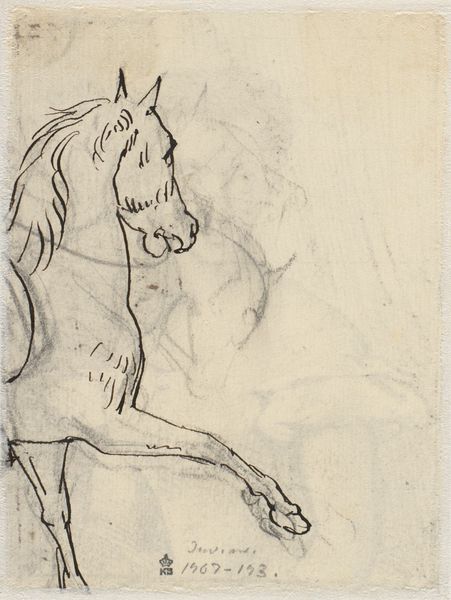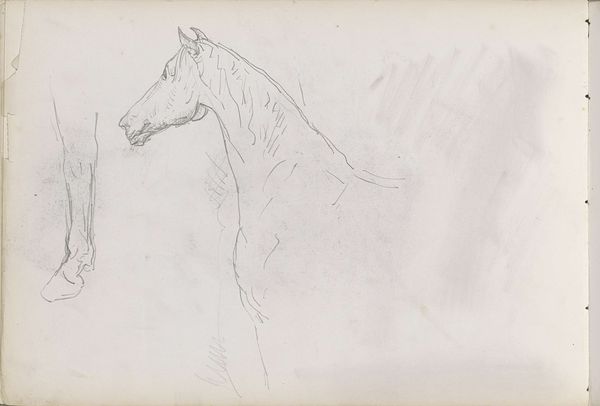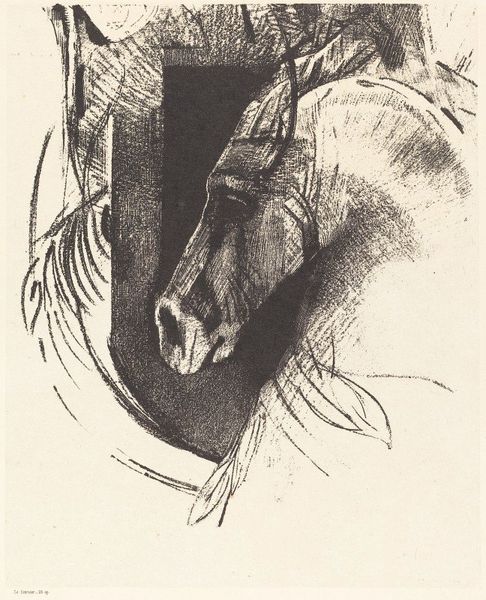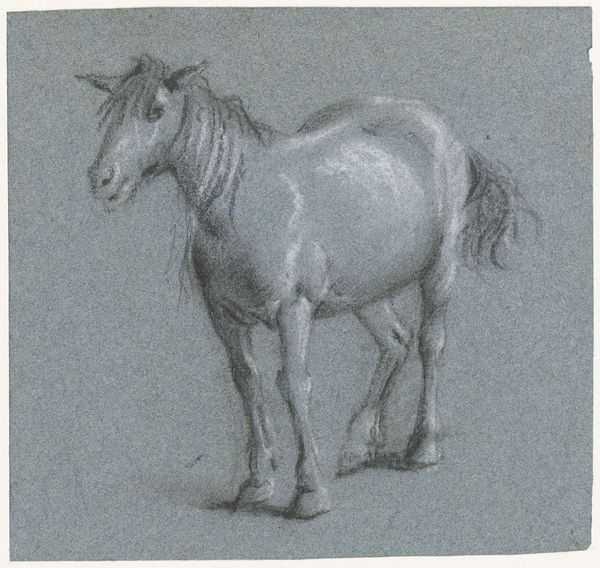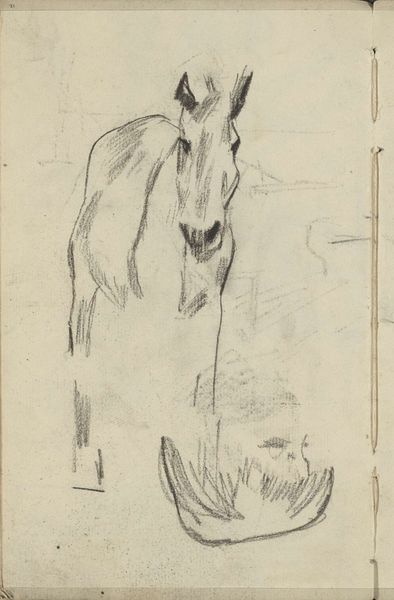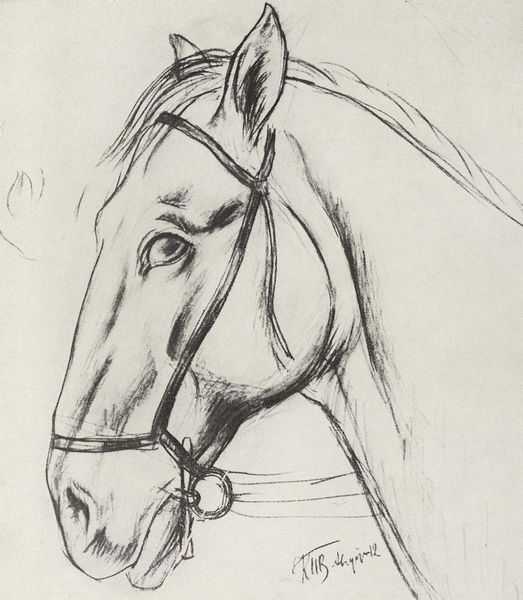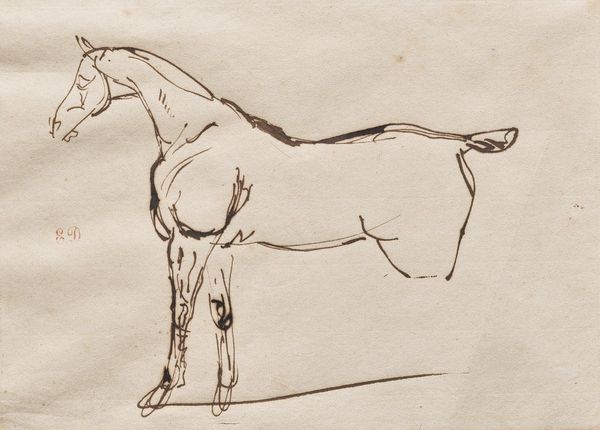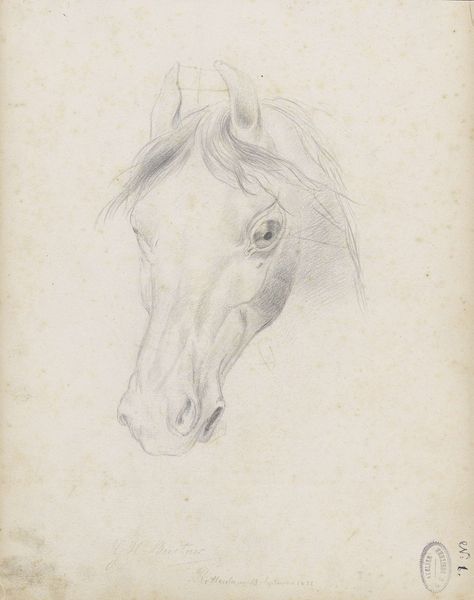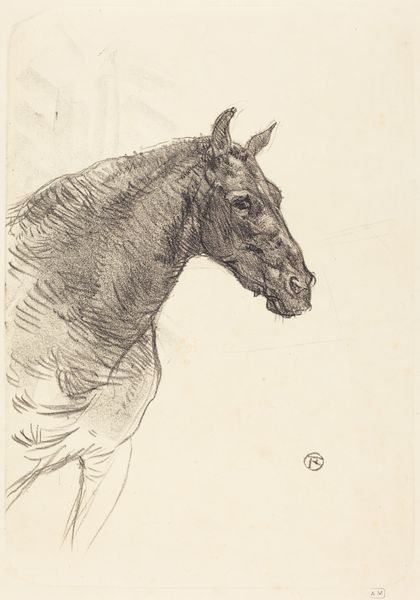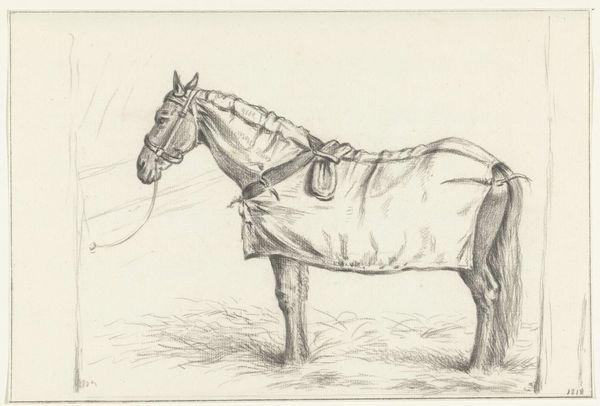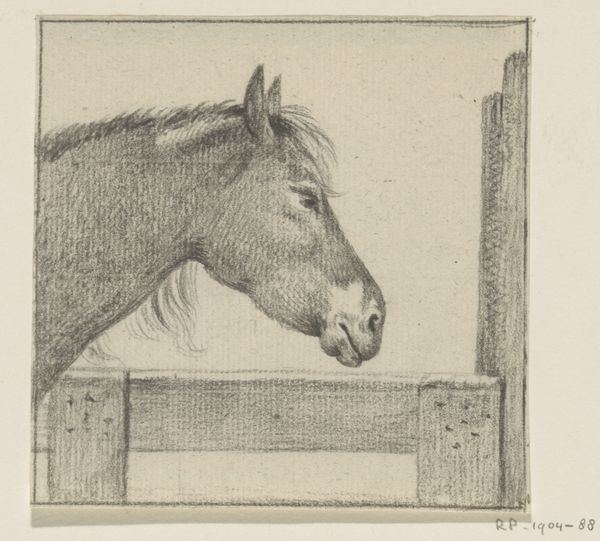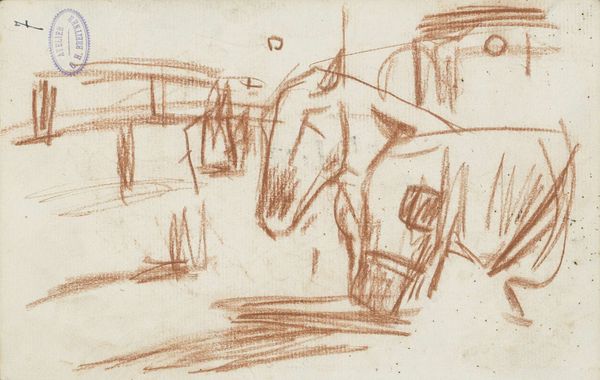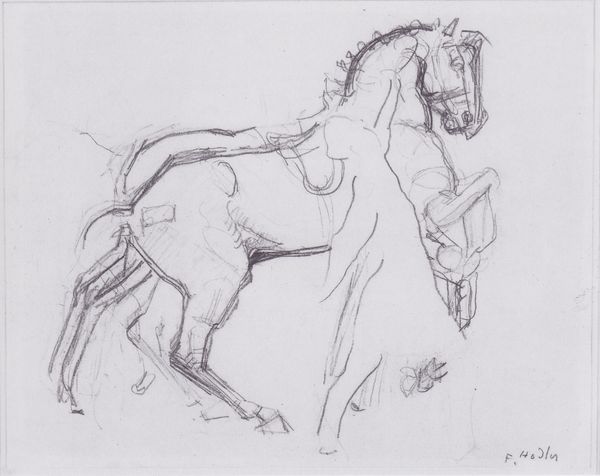
drawing, pencil
#
portrait
#
drawing
#
pencil sketch
#
form
#
pencil
#
line
#
realism
Copyright: Public Domain: Artvee
Editor: We're looking at Cyprián Majerník's "Horse's Head" from 1936, rendered in pencil. There’s something about the texture of the pencil on paper that gives the image a feeling of quiet contemplation. What do you make of it? Curator: Focusing on formal elements, the interplay of line and shadow is paramount. Note the economy of line; Majerník uses only what is necessary to define form. Observe how the varying pressure of the pencil creates depth, especially around the horse’s eye and jawline. This achieves a convincing sense of three-dimensionality despite the limitations of the medium. Editor: I see that, yes. The shading does give it depth. I also notice the background seems almost architectural, but less defined than the horse itself. Is there a reason the artist left it less refined? Curator: Precisely. Consider the compositional relationship: the stark, almost minimalist lines of the background against the more softly rendered horse’s head. This contrast isolates the animal, inviting us to contemplate its form in isolation. The architectural elements serve to frame and emphasize the primary subject. It focuses on form using value in order to create atmospheric perspective to contrast hard/soft edges in the foreground with lost/less distinct ones in the background. It becomes clear, and more defined because of that perspective and form relationship. Editor: So, it is the strategic use of contrast, light, and shadow. Thanks, I see the intent more clearly now! Curator: Exactly. And through careful observation of such formal elements, the work reveals layers of artistic intention.
Comments
No comments
Be the first to comment and join the conversation on the ultimate creative platform.
